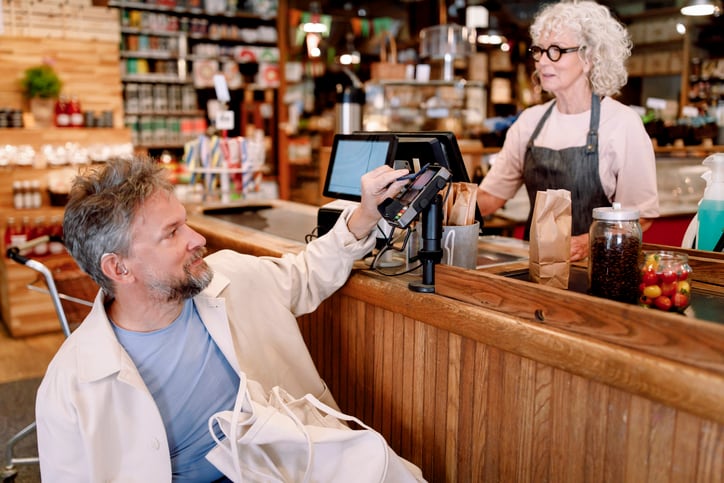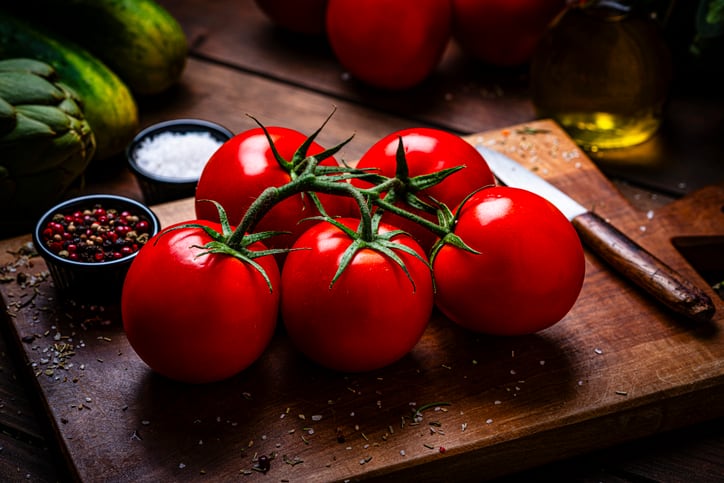Retail spending continued to tick up in the US in July in the run-up to the implementation of new tariffs on more than 80 countries that took effect Aug. 7 – building on earlier tariffs imposed by the Trump administration, which has taken an on-again, off-again approach to the ongoing trade war.
While many economists predict the brunt of tariffs will be felt later this year, at least one is optimistic that consumer spending will hold steady – especially when it comes to groceries – although they may shift what they buy and where.
In response, retailers, restaurants and brands may want to invest both in promotions and brand building to shore up consumer loyalty and secure sales going forward.
Food spending ticks up – but will it sustain as more tariffs go into effect?
The US Census Bureau predicts retail and food sales in July increased 0.5% to $726.3 billion from the previous month and 3.9% from a year ago.
Grocery store sales also increased, albeit less at 0.4% to $78.4 billion month-over-month and 2.6% year-over-year, according to the most recent data released Friday.
Moreover, the US Department of Commerce revised the percent change for retail sales from May 2025 to June 2025 to 0.9% from previous estimates of 0.6% – reinforcing some predictions that spending will stay strong. However, many consumers are rushing to buy high ticket items before the full brunt of tariffs hit.
While encouraging, the uptick does not mean retailers and brands will escape tariffs unscathed. The Tax Foundation predicts Trump tariffs will affect nearly 75% of US food imports, which added up to $163 billion of the $221 billion in food products imported in 2024.
“The consensus among economists is that more notable tariff impacts are coming – likely later this year,” and that many industry players have been able to delay price increases that could deter spending by stockpiling inventory obtained in prior months which was “unaffected by significant trade issues,” said Chip West, director of category strategy and national sales at RR Donnelley & Sons Company.
Several CPG players and retailers, including Walmart, have cautioned they will need to raise prices to offset inflation, if they have not already done so.
Despite this, West is optimistic that increases will not stop shoppers.
“I predict that there won’t be a single defining moment of large, across-the-board price increases for consumers. Instead, I believe most retail price increases will be gradual and vary by category,” he said.
“This should not deter consumers from spending, as we have witnessed their resilience in the past, including their ability be agile and to constantly re-prioritize purchases,” he added.
Grocery gains as restaurant spending declines
Grocery sales could benefit from this reprioritization, based on the data to date.
The 0.4% uptick in July grocery sales month-over-month came along side an estimated 0.4% dip in restaurant sales in the same period, according to the Census Bureau data.
“When food prices get high, consumers notice, and they trade down from restaurants,” said West. In response, a significant number of them choose instead to spend a larger portion of their food budget at grocery stores.
How will spending shifts impact grocery retailers and CPGs?
While grocery retailers may be winning food sales for now, they are not immune to shifts in consumer shopping.
“Nearly all US households have purchased private label grocery products in the past year. This has been fueled by the quest to save money, but also by a significant percentage of consumers believing the private label brand is as good as the name brand,” West noted.
He added promoting value, which can include brand awareness, and “attractive offers” will be critical in coming months for categories hit especially hard by tariffs, including coffee, seafood, cocoa and certain produce.
Indeed, Consumer Price Index data from Bureau of Labor Statistics released earlier last week shows a notable increase in prices for tomatoes and lettuce, many of which come from Mexico.
Likewise, Hershey recently lowered its guidance due to tariffs reflecting concerns about cocoa pricing and availability.


